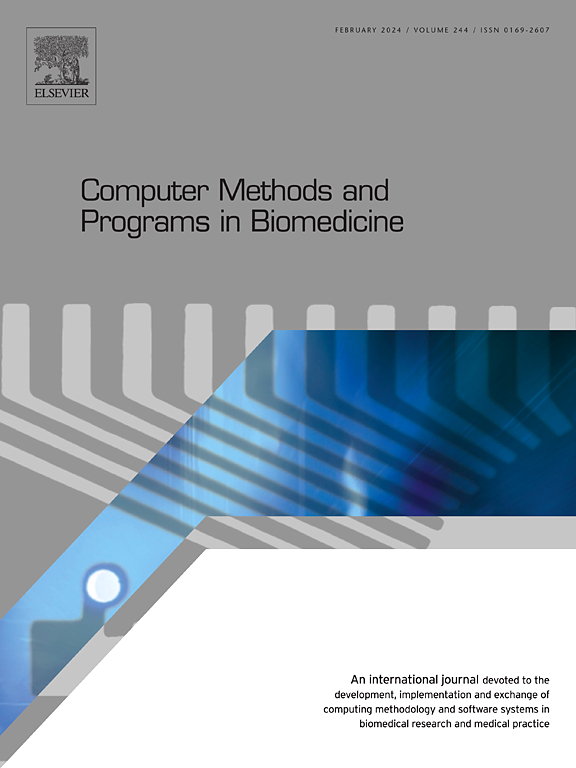Convolutional neural network-based method for the real-time detection of reflex syncope during head-up tilt test
IF 4.9
2区 医学
Q1 COMPUTER SCIENCE, INTERDISCIPLINARY APPLICATIONS
引用次数: 0
Abstract
Background and objectives
Reflex syncope (RS) is the most common type of syncope caused by dysregulation of the autonomic nervous system. Diagnosing RS typically involves the head-up tilt test (HUTT), which tracks physiological signals such as blood pressure and electrocardiograms during postural changes. However, the HUTT is time-consuming and may trigger RS symptoms in patients. Therefore, a real-time monitoring system for RS risk assessment is necessary to enhance medical efficiency and patient convenience. Although several methods have been developed, most depend on manually extracted features from physiological signals, making them susceptible to feature extraction methods and signal noise.
Methods
This study introduces a deep learning-based method for real-time RS detection. This method removes the need for manually extracted features by employing an end-to-end architecture consisting of residual and squeeze-and-excitation blocks. The likelihood of RS occurrence was quantified using the proposed method by analyzing a raw blood pressure signal.
Results
Data from 1348 patients (1291 normal and 57 with RS) were used to develop and evaluate the proposed method. The area under the receiver operating characteristic curve was 0.972 for RS detection using ten-fold cross-validation. A threshold between zero and one can adjust the performance characteristics of the proposed method. At a threshold of 0.75, the method achieved sensitivity and specificity values of 94.74 and 94.27 %, respectively. Notably, the technique detected RS 165.35 s before its occurrence, on average.
Conclusions
The proposed method outperformed conventional methods in RS detection. In addition to its excellent detection performance, this method only requires blood pressure monitoring, reducing reliance on the number of input signals and enhancing its applicability compared to procedures that require multiple signals. These advantages contribute to the development of safer, more convenient, and more efficient RS detection systems.
求助全文
约1分钟内获得全文
求助全文
来源期刊

Computer methods and programs in biomedicine
工程技术-工程:生物医学
CiteScore
12.30
自引率
6.60%
发文量
601
审稿时长
135 days
期刊介绍:
To encourage the development of formal computing methods, and their application in biomedical research and medical practice, by illustration of fundamental principles in biomedical informatics research; to stimulate basic research into application software design; to report the state of research of biomedical information processing projects; to report new computer methodologies applied in biomedical areas; the eventual distribution of demonstrable software to avoid duplication of effort; to provide a forum for discussion and improvement of existing software; to optimize contact between national organizations and regional user groups by promoting an international exchange of information on formal methods, standards and software in biomedicine.
Computer Methods and Programs in Biomedicine covers computing methodology and software systems derived from computing science for implementation in all aspects of biomedical research and medical practice. It is designed to serve: biochemists; biologists; geneticists; immunologists; neuroscientists; pharmacologists; toxicologists; clinicians; epidemiologists; psychiatrists; psychologists; cardiologists; chemists; (radio)physicists; computer scientists; programmers and systems analysts; biomedical, clinical, electrical and other engineers; teachers of medical informatics and users of educational software.
 求助内容:
求助内容: 应助结果提醒方式:
应助结果提醒方式:


